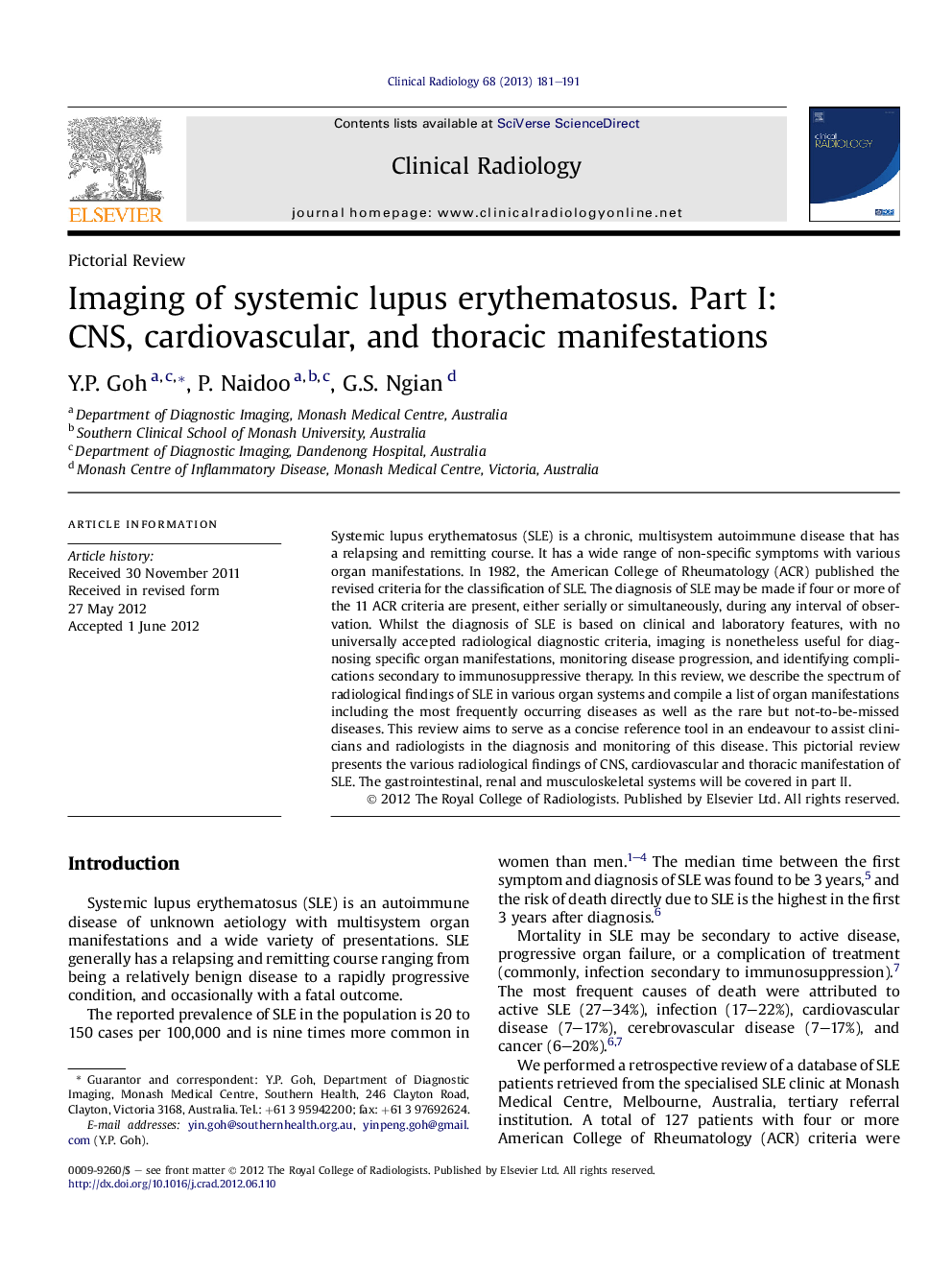| Article ID | Journal | Published Year | Pages | File Type |
|---|---|---|---|---|
| 3982155 | Clinical Radiology | 2013 | 11 Pages |
Systemic lupus erythematosus (SLE) is a chronic, multisystem autoimmune disease that has a relapsing and remitting course. It has a wide range of non-specific symptoms with various organ manifestations. In 1982, the American College of Rheumatology (ACR) published the revised criteria for the classification of SLE. The diagnosis of SLE may be made if four or more of the 11 ACR criteria are present, either serially or simultaneously, during any interval of observation. Whilst the diagnosis of SLE is based on clinical and laboratory features, with no universally accepted radiological diagnostic criteria, imaging is nonetheless useful for diagnosing specific organ manifestations, monitoring disease progression, and identifying complications secondary to immunosuppressive therapy. In this review, we describe the spectrum of radiological findings of SLE in various organ systems and compile a list of organ manifestations including the most frequently occurring diseases as well as the rare but not-to-be-missed diseases. This review aims to serve as a concise reference tool in an endeavour to assist clinicians and radiologists in the diagnosis and monitoring of this disease. This pictorial review presents the various radiological findings of CNS, cardiovascular and thoracic manifestation of SLE. The gastrointestinal, renal and musculoskeletal systems will be covered in part II.
